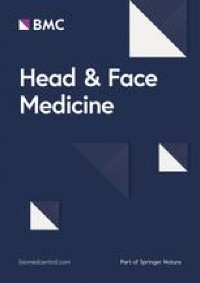
J Voice. 2021 Mar 16:S0892-1997(21)00077-1. doi: 10.1016/j.jvoice.2021.02.015. Online ahead of print.
ABSTRACT
OBJECTIVES: Presbyphonia negatively impacts quality of life in patients with age-related voice changes. A proof-of-concept study showed promise for high vocal intensity exercise to treat presbyphonia, which became the basis for a novel intervention for age-related voice changes known as Phonation Resistance Training Exercises (PhoRTE). Expiratory Muscle Strength Training ( EMST) has also been proposed as an additional intervention to target and strengthen the aging respiratory system; however, EMST has undergone limited evaluation as an adjunct treatment for elderly patients undergoing voice therapy for presbyphonia. This study determined if the addition of EMST to PhoRTE voice therapy (PhoRTE + EMST) is at least as effective at voice improvement as PhoRTE alone.
STUDY DESIGN: Prospective, randomized, controlled, single-blinded, non-inferiority.
MATERIALS AND METHODS: Participants aged 55 years or older with a diagnosis of vocal fold atrophy were randomized to complete PhoRTE therapy or PhoRTE + EMST. The primary outcome was change in Voice Handicap Index-10 (VHI-10). Secondary outcomes included the Aging Voice Index, maximum expiratory pressure, and acoustic and aerodynamic measures of voice. Repeated measures linear mixed models were constructed to analyze outcomes at a significance level of α = 0.10.
RESULTS: Twenty-six participa nts were recruited for the study, and 24 participants were randomized to either treatment arm. Sixteen participants completed the entire study. Both treatment arms showed statistically significant and clinically meaningful improvements in VHI-10 (PhoRTE mean [M] = -8.20, P < 0.001; PhoRTE + EMST M = -9.58, P < 0.001), and PhoRTE + EMST was noninferior to PhoRTE alone (P = 0.069). Both groups experienced a statistically significant pre-post treatment decrease (improvement) in AVI scores (PhoRTE M = -18.40, P = 0.004; PhoRTE + EMST M = -16.28, P = 0.005). PhoRTE+EMST had statistically significantly greater changes in maximum expiratory pressure compared to PhoRTE alone (PhoRTE M = 8.24 cm H2O, PhoRTE + EMST M = 32.63 cm H2O; P= 0.015). Some secondary acoustic and aerodynamic outcomes displayed trends toward improvement.
CONCLUSION: This study demonstrates that voice therapy targeting high vocal intensity exercise (eg, PhoRTE) and EMST can play a role in improving voice outcomes for patients with presbyphonia.
PMID:33741235 | DOI:10.1016/j.jvoice.2021.02.015






